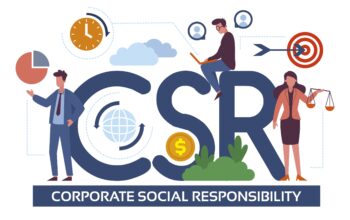Inclusion in the Workplace: A Pathway to Innovation
Introduction
In today’s fast-paced and diverse world, inclusion in the workplace has emerged as a crucial element for fostering a thriving and successful organization. Embracing inclusion goes beyond simply meeting diversity quotas; it entails creating an environment where every employee feels valued, respected, and empowered to contribute their unique perspectives and talents. In this article, we will delve into the significance of inclusion, its benefits, and effective strategies to promote inclusivity within the workplace.
Table of Contents
Understanding Inclusion in the Workplace
Inclusion involves actively incorporating employees from diverse backgrounds, cultures, genders, and abilities into all aspects of the organization. It encompasses providing equal opportunities, eliminating biases, and fostering a sense of belonging among team members. By creating a culture of inclusion, companies can harness the power of diverse perspectives, leading to increased creativity, innovation, and overall performance.
The Benefits of an Inclusive Workplace
A. Enhanced Creativity and Innovation:
Diverse teams are more likely to come up with innovative solutions and fresh ideas due to the multitude of perspectives and experiences they bring to the table.
B. Improved Employee Engagement:
When employees feel included and valued, they are more likely to be engaged and committed to their work, resulting in higher productivity and lower turnover rates.
C. Increased Productivity:
Inclusive workplaces promote collaboration and effective communication, leading to enhanced teamwork and productivity.
D. Expanded Talent Pool:
Organizations that prioritize inclusion attract top talent from diverse backgrounds, thereby enriching the workforce with a wide range of skills and abilities.
E. Positive Brand Image:
Companies known for their commitment to inclusivity are perceived as socially responsible, which enhances their brand reputation and attracts both customers and potential employees.
Key Strategies for Fostering Inclusion
A. Leadership Commitment:
Inclusion efforts must start from the top. Leaders should set the tone by actively promoting and supporting inclusivity in all aspects of the organization.
B. Diverse Hiring Practices:
Implementing diverse hiring practices, such as blind recruitment and diversified interview panels, can help reduce unconscious biases and ensure a fair selection process.
C. Inclusive Policies and Benefits:
Create policies that cater to the diverse needs of employees, such as flexible work arrangements, parental leave, and accommodation for employees with disabilities.
D. Training and Education:
Conduct regular training sessions to raise awareness about unconscious biases, microaggressions, and the benefits of inclusivity, promoting understanding and empathy among employees.
E. Employee Resource Groups (ERGs):
Encourage the formation of ERGs that provide a safe space for employees to connect, share experiences, and offer suggestions to improve workplace inclusivity.
F. Inclusive Communication:
Ensure that communication channels are open and accessible to all employees. Use inclusive language in company-wide communications and avoid stereotypes.
G. Celebrate Diversity:
Embrace diversity by celebrating cultural events and important milestones that represent the varied backgrounds of employees.
Conclusion
Inclusion in the workplace is not just a buzzword; it is a vital aspect of modern business success. Embracing diversity and fostering a culture of inclusivity brings numerous benefits, from increased innovation to improved employee satisfaction and productivity. By committing to creating an inclusive workplace, organizations can unlock the full potential of their diverse workforce and thrive in an ever-changing global landscape.
Frequently Asked Questions (FAQs)
1. What is inclusion in the workplace?
Inclusion in the workplace is all about creating an environment where everyone feels like they belong and are respected, no matter who they are or where they come from. It’s like having a big, diverse family at work!
2. Why is inclusion important in the workplace?
When workplaces are inclusive, people are happier and more motivated to give their best. Plus, it brings in a whole bunch of benefits like better teamwork, fresh ideas, and even happier customers.
3. How can workplaces promote inclusion?
Well, companies can promote inclusion by making sure they’ve got policies that support diversity. And it’s not just policies, they can organize cool diversity and inclusion training sessions and set up groups where employees from different backgrounds can connect and share their experiences.
4. What are some benefits of a diverse and inclusive workforce?
Oh, diversity is like having a box of different-colored crayons instead of just one. With a diverse bunch of people, you get a ton of different perspectives and approaches. It makes problem-solving way more fun and creative!
5. How can unconscious bias affect inclusion in the workplace?
Unconscious bias is like having little stereotypes hidden in our brains, and we might not even know it. It can affect our decisions without us realizing it, and that’s why we need to be aware of it and tackle it head-on.
6. What are microaggressions, and why are they harmful to inclusion?
Microaggressions are like those tiny annoying paper cuts but in the workplace. They’re these subtle, unintentional comments that can make people feel left out or hurt. They may be small, but they add up and can ruin the whole team vibe.
8. What’s the difference between diversity and inclusion then?
Diversity is like having a mix of awesome ingredients, while inclusion is about cooking up the perfect recipe. It’s about making sure everyone’s voice is heard and they feel like they’re an important part of the team stew!
9. How can regular employees like us help with inclusion?
We can totally do our part! Being aware of our own biases is a good start. Treating coworkers with kindness, joining in on diversity training, and reporting any unfair treatment are simple but powerful ways to make a difference.
10. Are there any challenges to watch out for?
Change is never easy, and some folks might be resistant. Plus, it takes time and effort to keep the inclusive spirit alive. But with everyone on board, we can tackle these challenges and make our workplace one big happy, diverse family!
Read more: Workplace Equality for Women: Know Your Rights
- 28 July 2023
- Written By Archana Hayaran
- Associate Client Relationship
- Review By: Advocate Anupam Agrawal




